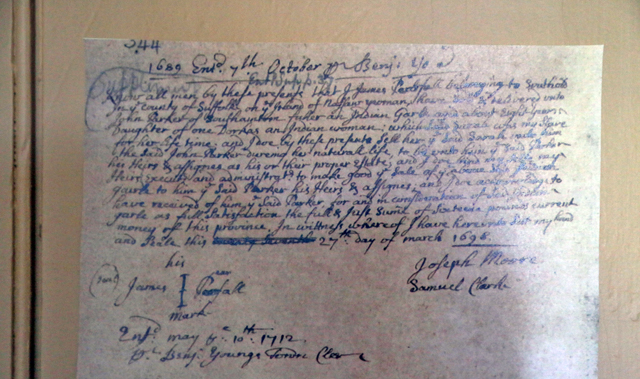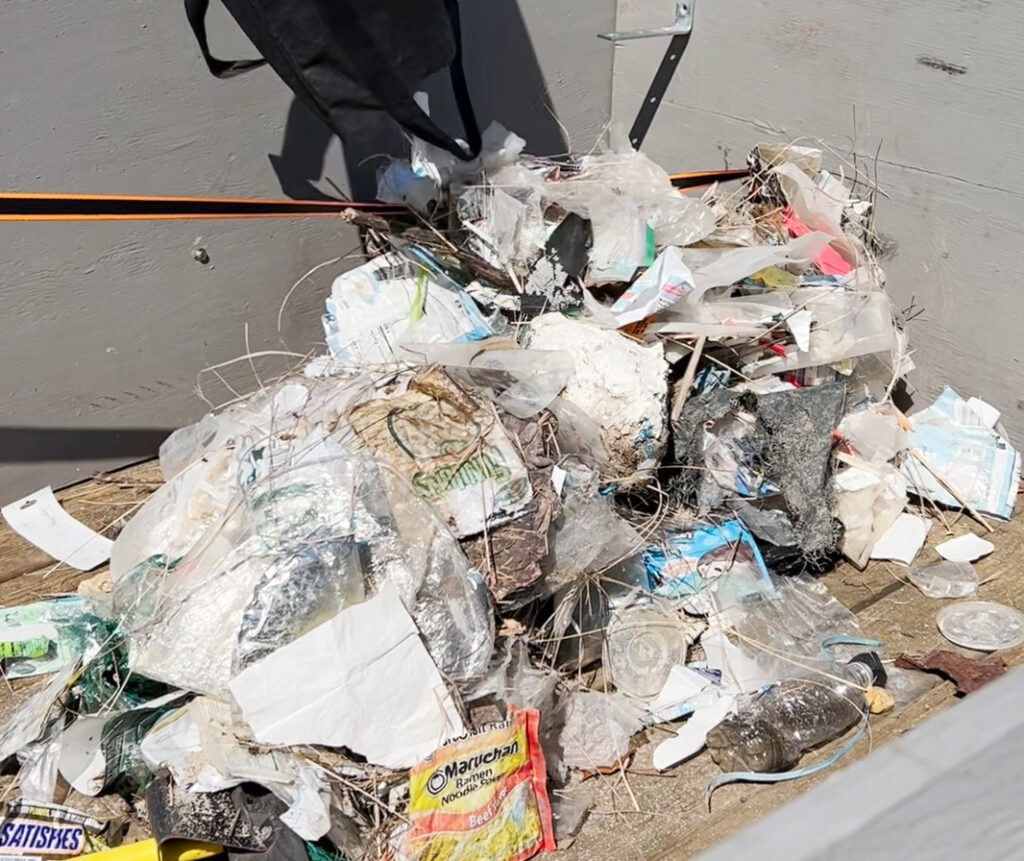Historical society opens ‘Slavery in Southold’ exhibit


In 1629, 11 Africans arrived in New York and were sold to the Dutch Colonial government in what is now Manhattan. It began an era of slavery in the state that would extend to Southold Town. It’s a moment in local history that is largely overlooked.
Understanding and acknowledging that dark past is at the heart of a new exhibit from the Southold Historical Society titled “Slavery in Southold.” The exhibit in the Thomas Moore House opened Friday. The house is also referred to as the Samuel Landon House, in reference to the man who was the probable builder of the home. Mr. Landon, who held the office of town supervisor for 12 years, owned five slaves. They all lived in the home.
Amy Folk, who curated the exhibit as the historical society’s manager of collections, said she hopes to bring slavery to the forefront of people’s consciousness and to understand the multi-ethnic backgrounds in the town’s history.
“It’s been an experience that’s been fraught with emotion,” she said of the exhibit.
The historical society hopes the exhibit is the first step toward a larger conversation.
It’s the first time a historical society on the East End has addressed slavery, organizers said, partly due to limited available information on the subject.
Deanna Witte-Walker, the historical society’s executive director, said it was important to not add subjectivity.
“You want it to be the facts and educational without putting in your own opinion,” she said.
The exhibit features silhouettes of slaves. Ms. Folk created the silhouettes based on images she could find of people during that era. Because information is so limited on slavery here, she didn’t have exact images of the specific Southold slaves.
“We don’t know what they look like, so I don’t want to put up somebody else’s face,” she said.
One silhouette highlights Zipporah, an enslaved woman who was inherited by Jared Landon, Samuel’s son, and moved with the Landon family to Cutchogue. She was freed in 1827 and remained with the Landon family until she died in 1844.
The exhibit also features copies of a manumission, the document that was issued to freed slaves.
Freedom did not come easily. The exhibit points out how former slaves had to adjust to providing for themselves with basics like food, clothing and shelter while enduring the prejudices that followed in every area of their lives.
Limited opportunities kept many freed slaves tied to their former owners or to low-wage jobs, the exhibit says.
The exhibit opened the same weekend that the New York Times Magazine published a special edition called The 1619 Project, dedicated to the beginning of American slavery 400 years ago. The project aimed to “reframe the country’s history, understanding 1619 as our true founding.”
Sonia Spar, the co-chair of Southold’s Anti-Bias Task Force, said it was important to start a dialogue and remember enslaved people.
“This is not the whole story, this is a small touch to begin the conversation that we’ll need to have,” she said. “It’s an important topic that we need to have because in the Anti-Bias Task Force we see a connection to our present. How do we see racism? What are we doing as a community to understand that this is happening in our town?”
The Anti-Bias Task Force offered to facilitate a roundtable discussion to continue the conversation for those who are interested. Organizers left a clipboard at the exhibit for people to sign up.
“It can be very emotional, it can be intense and it’s a sensitive subject,” said Ms. Witte-Walker.
The exhibit can be viewed during the historical society’s normal hours on Saturdays and Sundays from 1 to 4 p.m. through Sept. 22. For more information, email [email protected] or call 631-765-5500.








